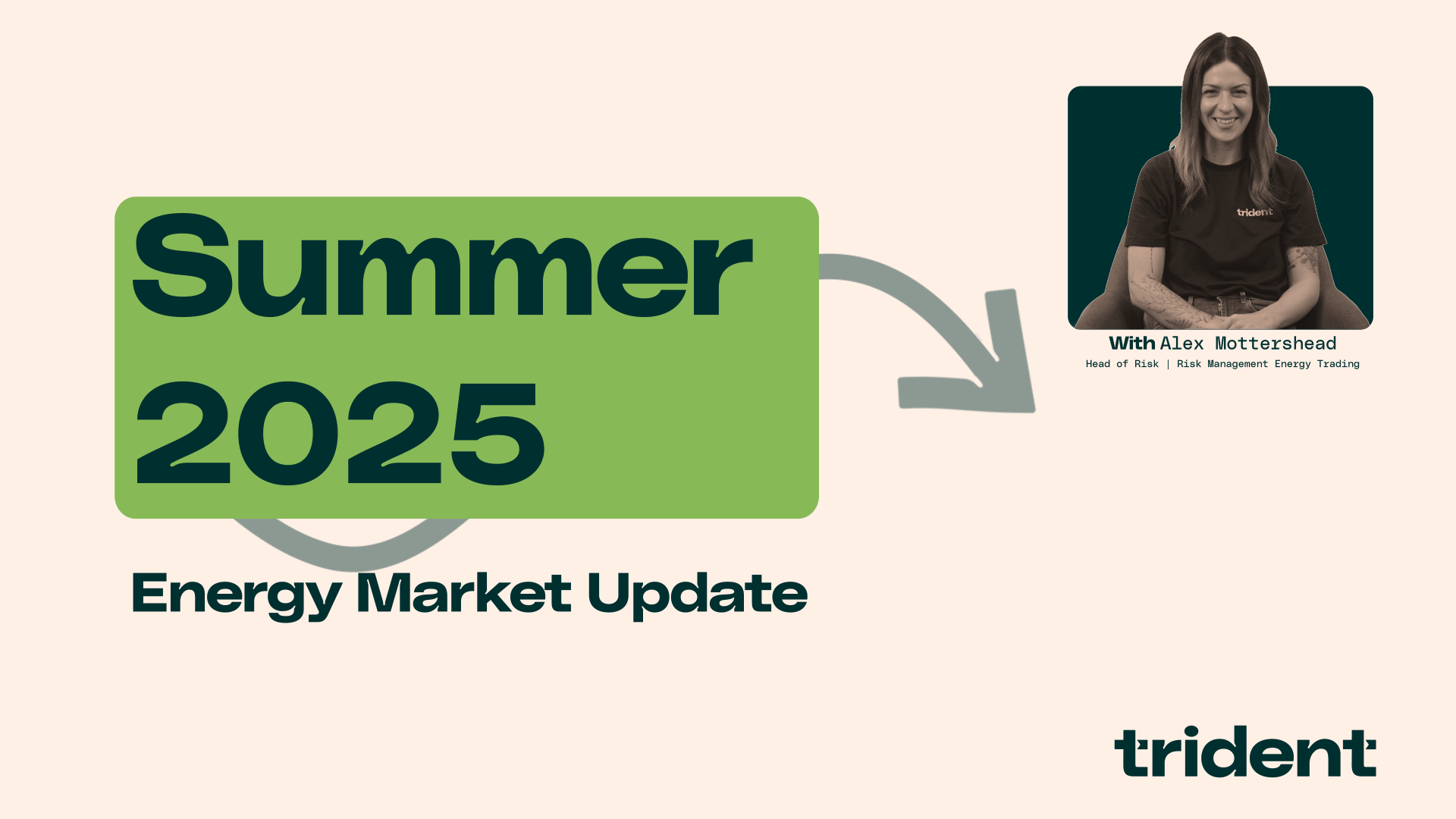
Summer 2025 Energy Market Update: Key Risks and What to Watch
As we move through summer 2025, energy markets remain volatile, shaped by a mix of global events and shifting demand. In this update, we explore the key factors currently driving prices and what they could mean for your energy strategy heading into winter.
Watch the full video below or scroll down for the key takeaways.
Geopolitics: Middle East & Ukraine
Geopolitical risk continues to be a major driver of energy market volatility.
Just recently, tensions in the Middle East pushed prices up by 20% in a matter of days. This highlights how quickly sentiment can shift. Despite a fragile ceasefire in late June, tensions remain high. Any renewed disruption, particularly in the Strait of Hormuz, could trigger supply shocks and threaten global LNG and oil shipping routes.
On top of that, Ukraine’s domestic gas output has been hit by Russian attacks. As a result, the country is increasingly relying on European imports to refill storage from record low levels. Both situations could squeeze European supply and push prices higher.
Tariffs & Trade Tensions
Tariff threats from the US are adding another layer of uncertainty.
While recent US–EU agreements have eased some concerns, unexpectedly high tariffs on other countries are fuelling fears of weaker global demand. Trump’s latest proposals, including higher tariffs on countries trading with Russia, are set to take effect by mid-September if no peace deal is reached.
The aim is to pressure Russia. However, major importers like India and China may struggle to replace Russian supply elsewhere. Any retaliation could spark a trade war, which may dampen global demand and potentially push energy prices lower.
LNG Supply & European Storage
The LNG market remains structurally tight due to reduced Russian pipeline flows, increased European demand, and ongoing conflict risk in the Middle East.
In early 2025, European gas prices stayed at or above Asian hub levels, which boosted imports. LNG deliveries into Europe are expected to increase by 25% this year.
Storage levels are improving, with injection rates on track to reach 83% by 1st November. However, risks remain. Unplanned outages in Norway or continued LNG diversions to Asia during heatwaves could still affect supply.
Weather Outlook
Weather is playing an increasingly important role in market dynamics.
This summer, prolonged heat across Europe may raise gas demand for cooling and affect nuclear output, as warmer river temperatures make reactor cooling more difficult.
Looking ahead, the Atlantic hurricane season could disrupt LNG exports from the US, which is a key supply route for Europe. Although it’s still too early for a confident winter forecast, some indicators suggest a colder-than-average season could develop, depending on polar vortex behaviour. We’ll share more detail in our autumn update.
Policy Updates & Carbon Pricing
The UK has ruled out zonal pricing under the REMA programme, confirming that a single national price will remain in place. While many of the details are still to come, this gives a degree of certainty for businesses. A delivery plan is expected later this year, with broader reforms continuing through to 2029.
Carbon prices also remain strong, supported by the UK–EU Emissions Trading Scheme link and reduced allowance supply. Measures such as the Market Stability Reserve and the phasing out of free allowances in the aviation sector are tightening the market. This shift has caught the attention of investors and is something we’ll continue to watch closely.
What this means for your energy strategy
With so many moving parts, from geopolitics to weather, energy prices are likely to remain volatile through the rest of summer and into winter.
If you're on a flexible contract, it may be a good time to increase your coverage ahead of the colder months. For fixed contracts starting in October 2025 or April 2026, acting early can make all the difference. In a fast-moving market, opportunities can disappear quickly, so being prepared is essential.
Need support? We’re here to help
If you’ve got questions or want to talk through your energy strategy, get in touch with our team.